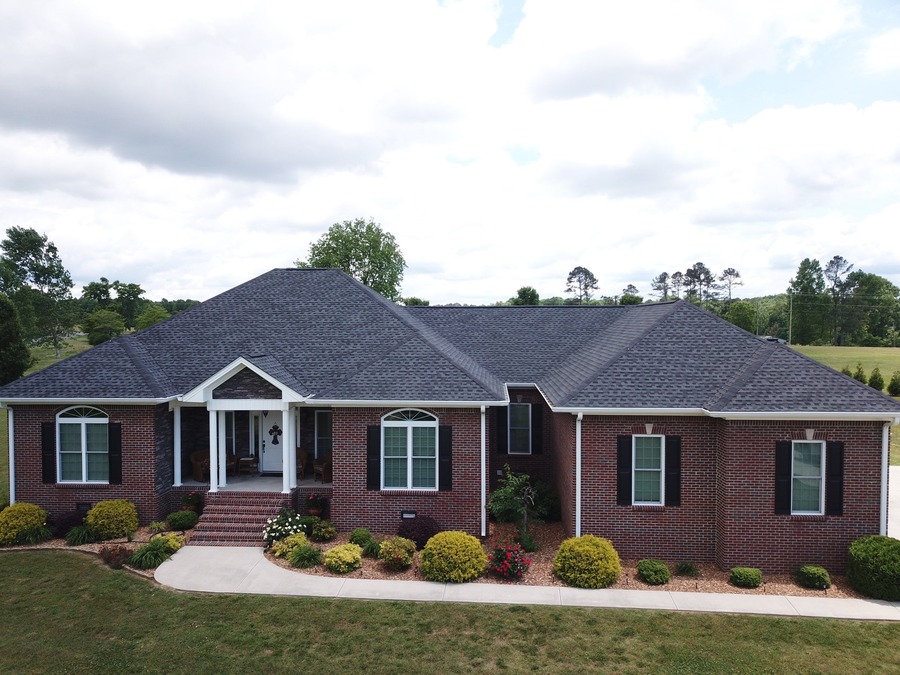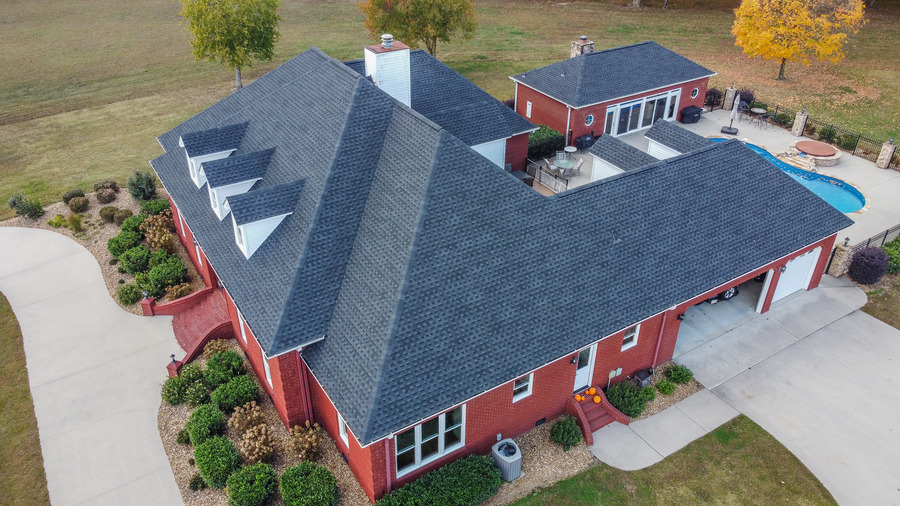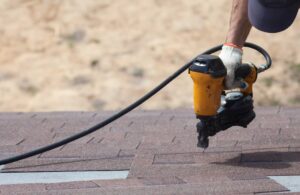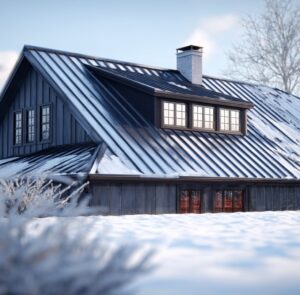Asphalt shingles are one of the most popular roofing materials in the United States, but have you ever wondered how are asphalt shingles made? Understanding the process behind their production helps homeowners appreciate their durability and reliability. In this blog, we’ll explore what asphalt shingles are made of, the steps involved in their creation, and why they continue to be a top choice for residential and commercial roofing.
What Are Asphalt Shingles Made Of?
Before diving into the manufacturing process, it’s essential to understand what asphalt shingles are made of. These shingles are composed of several key materials that contribute to their strength, flexibility, and weather resistance.
1. Fiberglass or Organic Mat
The core of an asphalt shingle is either a fiberglass or organic mat. Fiberglass mats are made from thin glass fibers woven together, making them lightweight and fire-resistant. Organic mats, though less common today, are composed of cellulose materials like recycled paper or wood fibers, making them thicker and more absorbent.
2. Asphalt Coating
A key component in how asphalt shingles are made is the asphalt itself. This petroleum-based substance is refined and treated with oxygen to increase its durability. It provides waterproofing, helping shingles withstand rain, snow, and ice.
3. Mineral Granules
The outer surface of asphalt shingles is coated with crushed mineral granules. These granules serve multiple purposes, including:
- UV Protection: Helps prevent sun damage and extends the lifespan of the shingles.
- Color and Aesthetics: Available in various shades to match different architectural styles.
- Added Durability: Helps resist impact from hail and debris.
4. Adhesive Strips
Many asphalt shingles include self-sealing adhesive strips that activate under heat, bonding them together. This feature enhances wind resistance and prevents shingles from lifting in storms.

How Are Asphalt Shingles Made? Step-by-Step Process
Now that we’ve covered what asphalt shingles are made of, let’s break down the step-by-step manufacturing process that transforms raw materials into the durable roofing products protecting homes nationwide.
1. Preparing the Base Material
The production begins with the base material—either a fiberglass or organic mat. This base layer acts as the backbone of the shingle, providing stability and shape. Fiberglass mats are coated with a thin layer of resin for added strength.
2. Asphalt Saturation and Coating
Next, the base material is passed through hot asphalt, saturating the mat and making it waterproof. This process varies slightly depending on whether the shingle uses a fiberglass or organic base:
- Fiberglass Shingles: Require a light asphalt coating to adhere to the surface.
- Organic Shingles: Require heavier asphalt saturation due to their absorbent nature.
3. Application of Mineral Granules
After the asphalt coating is applied, a layer of colored mineral granules is embedded into the surface. These granules come from crushed rock, ceramics, or slate, giving shingles their final appearance and protective properties.
At this stage, some manufacturers add specialized granules with algae-resistant properties, preventing discoloration caused by algae growth in humid climates.
4. Cooling and Cutting
Once the granules are embedded, the asphalt-coated sheet is cooled using water or air. The material is then cut into precise shapes—either three-tab, architectural, or designer shingles—based on market demand.
5. Application of Adhesive Strips
To enhance durability, many shingles include a self-sealing adhesive strip on the underside. When exposed to sunlight, this strip softens and bonds the shingles together, creating a weather-resistant barrier.
6. Quality Control and Packaging
Before shipment, asphalt shingles undergo extensive quality checks to ensure they meet industry standards for wind resistance, fire safety, and durability. Once approved, they are packaged, bundled, and distributed to suppliers and roofing contractors nationwide.
Why Asphalt Shingles Are a Top Roofing Choice
After learning how asphalt shingles are made, it’s easy to see why they remain a top choice for homeowners and businesses. Their affordability, ease of installation, and resilience make them a go-to option for reliable roofing solutions.
1. Cost-Effective Roofing Solution
Compared to materials like metal or slate, asphalt shingles provide excellent protection at a lower cost. Their long lifespan—typically 20 to 30 years—makes them a smart investment.
2. Versatile Design Options
Asphalt shingles come in various styles and colors, allowing homeowners to choose a look that complements their property’s aesthetic. From classic three-tab shingles to high-end architectural designs, there’s an option for every home.
3. Weather Resistance
Thanks to advancements in how asphalt shingles are made, modern shingles offer impressive durability against wind, rain, and hail. Some premium shingles can even withstand wind speeds up to 130 mph.
4. Environmentally Friendly Options
Many manufacturers now produce recyclable asphalt shingles, reducing landfill waste. Some states even have recycling programs to repurpose old shingles into road asphalt, contributing to sustainable building practices. The U.S. Environmental Protection Agency (EPA) highlights the benefits of asphalt shingle recycling here.

How to Ensure Your Asphalt Shingles Last Longer
Proper installation and maintenance play a crucial role in maximizing the lifespan of your roof. Follow these best practices to keep your shingles in top condition:
1. Schedule Regular Roof Inspections
Routine inspections help identify potential issues before they become costly repairs. A professional roofer can spot missing shingles, granule loss, or early signs of wear. Learn more about roof inspections from the National Roofing Contractors Association (NRCA) here.
2. Keep Gutters Clean
Clogged gutters lead to water pooling, which can damage shingles and cause leaks. Cleaning your gutters regularly prevents water buildup and extends your roof’s lifespan.
3. Address Storm Damage Promptly
After severe weather, check your roof for signs of storm damage, such as lifted shingles or missing granules. Timely repairs can prevent leaks and further deterioration.
Need a Roof Inspection? Schedule One Today!
Now that you know how asphalt shingles are made and what asphalt shingles are made of, keeping your roof in good condition is essential. At Agape Roofing, we specialize in expert inspections, repairs, and replacements to keep your home protected.
If you’re unsure about the condition of your roof, don’t wait for leaks to appear—get a roof inspection now. Our team is ready to ensure your home stays safe and secure.



